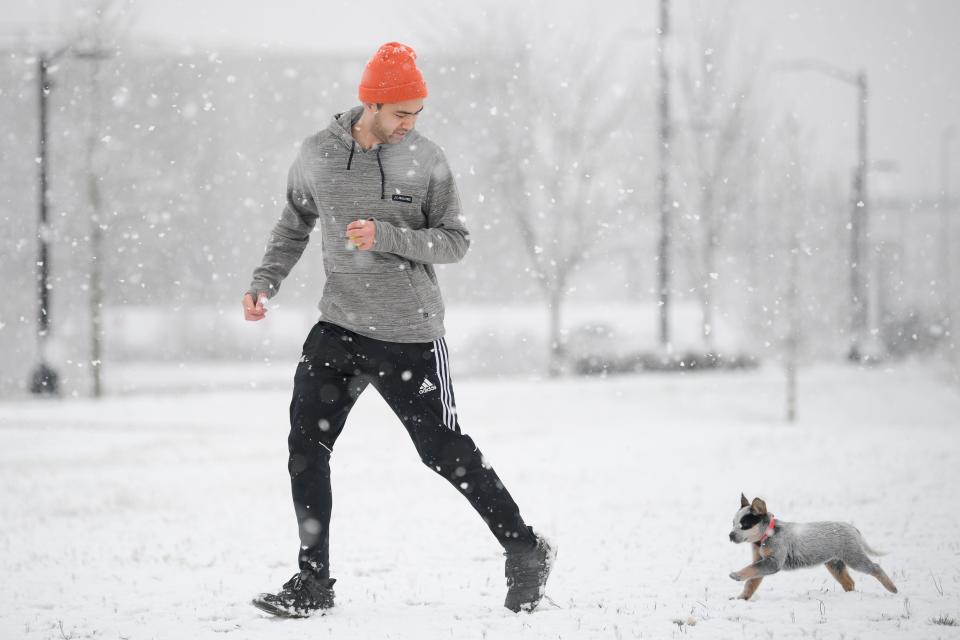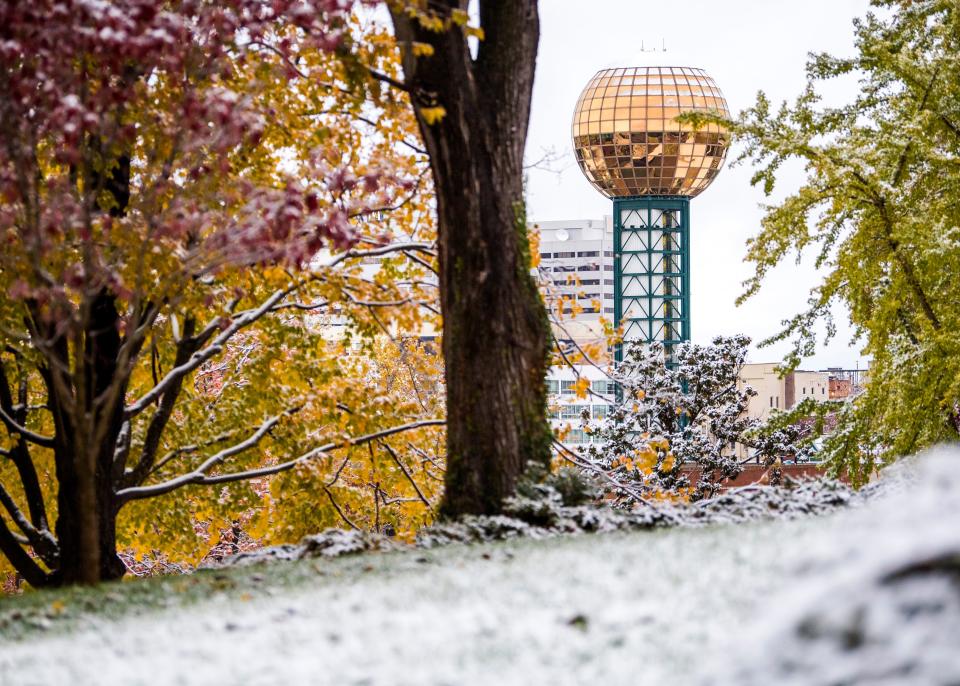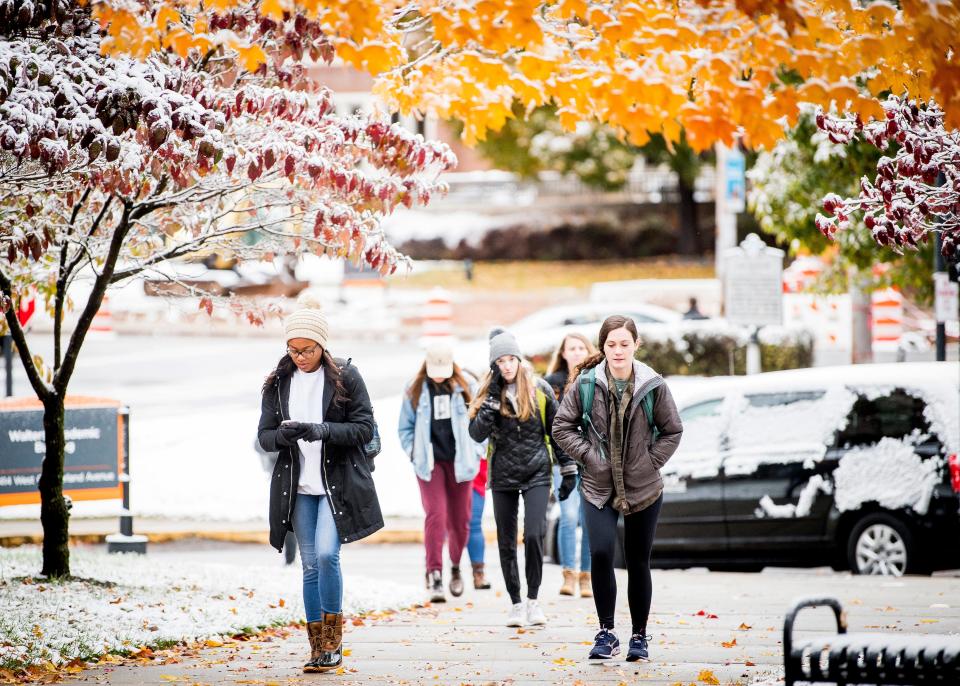How to avoid frozen pipes, stop drafts and keep your house safe in freezing weather
Knoxville is about to get some rough winter weather with extreme cold temperatures, heavy winds and possibly snow. That's why you should be prepared with these household weather tips.
From freezing pipes to chilly drafts, you don't want to get stuck freezing indoors or with damage that could've been avoided otherwise. Most of these tips can be accomplished with what's already in your house, but a couple may require purchasing a few items. But it's worth it to keep you, your family and your house safe.
Here are eight tips to keep your home safe and warm during this inclement winter weather.
How to avoid freezing pipes
There are a few ways to prevent pipes from freezing. A common way is to keep a drip flowing through them so water doesn't settle enough to freeze. Turning on faucets, showers and bathtubs to a steady drip or stream of water will help keep pipes from freezing. Also keep cabinet doors open to allow warm air to circulate around pipes.
Make sure outdoor spigots are cut off and aren't retaining any water, and that garden hoses aren't connected to faucets.
You can also install pipe insulation, caulk or seal areas with drafts and keep the thermostat high. It helps to know where the shut off valves are located, and to have a plumber's number handy just in case.
How to stop cold air drafts

Keeping windows and doors closed obviously helps to prevent drafts and keep warm air in your home. You can also put towels, blankets or special door snakes at the base of doors, especially those leading outside, to help reduce cold drafts.
Make sure your doors and windows are properly sealed and that there aren't any gaps. Replace any weatherstripping if needed.
If you have a basement or garage, now is the time to go through it and identify any drafts. Even if it's a temporary blockage, you can keep your house from getting too cold and know where to fix the problem later once you're able to.
Adding clings to your windows
Clear window clings add an extra layer of insulation. This works by specialized clinging plastic wrap to your window using static without adhesive.
Kits can be purchased at hardware stores, and they come with instructions on how to apply them. Make sure your windows are clean before putting the cling on.
If you aren't using a kit, you just need double-sided tape and plastic wrap. Put the tape around the window where you'd like to cover it with the wrap. Unpeel the other side of the tape and place the plastic wrap onto the window. Avoid wrinkles as much as possible and smooth it out.

Keep drapes and shades closed
Another way to insulate your home is to keep your drapes, blinds and window shades closed.
This method keeps heat insulated indoors and helps prevent cold air from getting inside. It effectively adds another layer to the windows.
Maintain a steady thermostat
Making sure the thermostat is at a steady temperature is a good way to keep your house from freezing. The Department of Energy recommends keeping the thermostat at 68 degrees during the winter to avoid huge heating bills, but you might want to bump it up closer to or above 70 degrees to keep the heat flowing during this rough weather patch.
Additionally, you can bundle up more with extra layers if you'd like to save a few extra dollars by not kicking on the heat unless absolutely necessary.
Plug a space heater directly into the wall
If you have a space heater, make sure it's plugged into the wall and not a surge protector. This decreases the risk of fires.
The same goes for heated blankets or pads. Plug it directly into the wall, and make sure the wire is not faulty, exposed or damaged.
Instal carbon monoxide detectors

Carbon monoxide exposure can be fatal.
Make sure there are carbon monoxide detectors on every floor of your house. These will alert you if there's too much carbon monoxide building up in your home so you can evacuate and call 911.
Detectors can be bought at many retailers and costs around $20 to $40 each.
Ways to prevent carbon monoxide include properly ventilating furnaces and fireplaces, warming up cars outside of the garage, and not using the stove or oven to heat up your house.
Prepare for future winters
Ways to prep for future winters includes adding insulation to your house, having extra layers of clothes available, checking for drafts, sealing up gaps, purchasing heaters, hanging drapes, stocking up on food and installing carbon monoxide detectors in advance.
In case of snow, you can get equipment like shovels and ice scrapers to help mitigate hazards for your walkway or car.
And don't forget to bring your animals indoors and keep them warm!
Keenan Thomas reports for the Knox News business growth and development team. You can reach him by email at keenan.thomas@knoxnews.com.
Support strong local journalism and unlock premium perks at knoxnews.com/subscribe.
This article originally appeared on Knoxville News Sentinel: Protect your house in freezing temperatures: Stop frozen pipes, drafts

